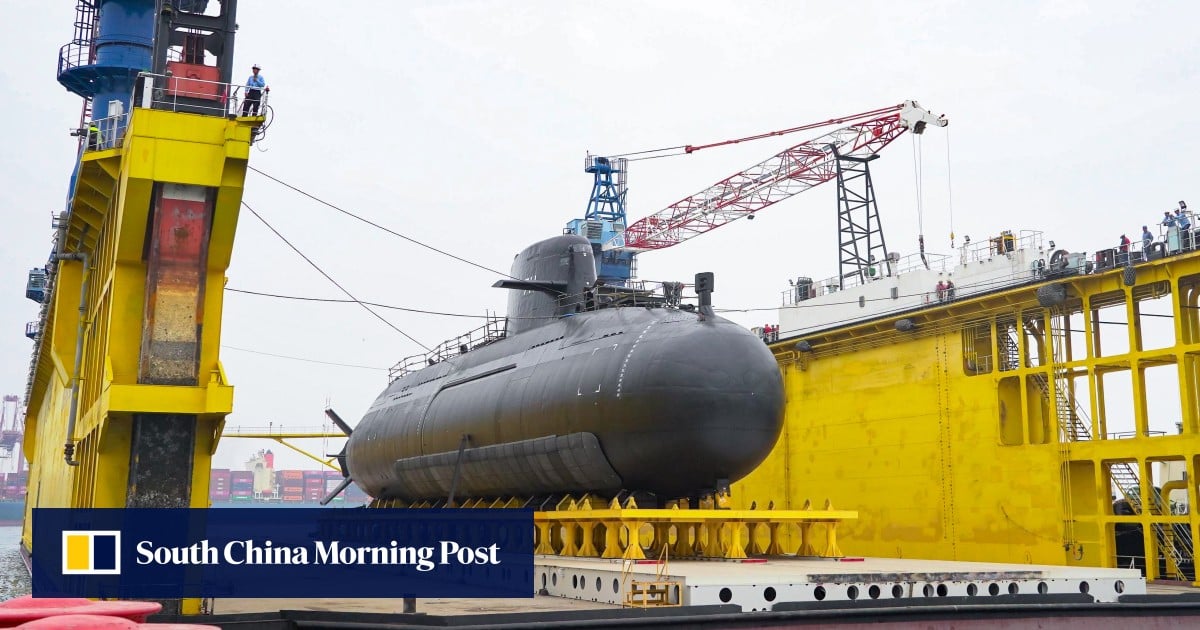Much like the TV show Undercover Boss, many times on that show CEO's saw how the company really works and used that intel to make positive changes. Many pledged to be more in touch with the workers going forward. I realize its TV and dramatized but there were real insights gained.I’ve got no idea if any MP’s are doing this.
I’m just saying that I saw first hand this style of management, at the very top, only once in 30yrs and I can say that it worked effectively, very effectively and I don’t know why I’ve not see it more over the years.
In my 20yrs of contracting independently in the banking world in Toronto I’ve tried to do something similar in the roles that I’ve had. I make some time monthly to have conversations with the people I work with throughout a projects life cycle to know them personally, to learn about their day to day job, what’s working, what’s not. It certainly helps me in doing my job as I quickly learn where the knowledge is, who has the background info that helps move things along and such. When I do this I try and find something, anything that I and the other person have in common and I use that as a ‘glue’ point to move the relationship forward. I don’t just seek out those that I think I would naturally ‘click’ because that doesn’t give you a well rounded view of what’s happening, it has to be even with those that I might try to naturally avoid. Some of these people have turned into good friends over the years.
You are using an out of date browser. It may not display this or other websites correctly.
You should upgrade or use an alternative browser.
You should upgrade or use an alternative browser.
Replacing the Subs
- Thread starter Spencer100
- Start date
daftandbarmy
Army.ca Fossil
- Reaction score
- 42,994
- Points
- 1,160
When is the last time the leader of one of the opposition parties toured a CAF base and spoke with individuals there about their needs without a camera or reporter being present?
Given the 'Culture Issues' that are prominently displayed in the media etc, it's probably not that surprising...
- Reaction score
- 11,978
- Points
- 1,160
More on the adjunct front
A 1200 mile "torpedo" with a 5 tonne warhead and a 60 day endurance - 3D Sonar and Thermal Imaging, AI targeting, FPV controls

 www.telegraph.co.uk
www.telegraph.co.uk
Liz Perkins in New York. Iona Cleave
30 September 2025 6:00am BST
David Petraeus, the retired four-star general who led US troops in Iraq and Afghanistan, said robotic submarines and other drones were a vital component in Ukraine’s war machine.
“This is the moment where Ukraine can stop the Russians cold on the battlefields if they are able to make even more unmanned systems,” Gen Petraeus told The Telegraph in New York.
He said arming Ukraine with powerful drones was part of a three-point plan that could deliver victory.
Ukraine recently unveiled its new Toloka TLK-1000 drone that it claims can destroy targets 1,200 miles away, potentially bringing the Kerch Bridge into range. Kyiv has previously struck the pathway that connects Crimea to Russia with maritime drones.
(Edit: image on link - 39 ft long and 5 ft diameter, 1240 mile range, 60 day endurance, operating depth of 984 feet, 5000 kg payload)
Gen Petraeus, the former CIA director, said the continued development of deadly sea drones and cruise missiles – like the Flamingo – that can strike deep within Russia was key to achieving a Ukrainian victory. But Kyiv needed continued military assistance from the West to do so, he said.
“I drove an unmanned maritime system the other day in an undisclosed location in Ukraine and it hit 100km an hour, it’s amazing. Alongside aerial drones, Ukraine now has the Flamingo ground-launch cruise missile that travels 3,000km.”
Gen Petraeus said money sent from the West to Kyiv to build up its drone army could help Ukraine win the war.
He said it was vital that the £200bn of frozen Russian assets acquired by the European Union was invested in Ukraine in order to develop more drones and win on the battlefield.
His second and third priorities to win the war are security guarantees and a tightening of sanctions on Russia by the EU and Donald Trump.
Gen Petraeus insisted all three points must be implemented together to force Putin’s hand.
“If those three sets of actions are taken simultaneously, I think you could finally get a situation where Russia would just be forced to halt the fighting because they can’t achieve additional gains [on the battlefield],” he said from the sidelines of the 2025 Concordia Annual Summit in New York.
“Or there could be a ceasefire agreement, if that is possible.”
His warning comes after several weeks of Russian provocations against Nato, with its drones probing Polish and Romanian air defences and its jets entering Estonian airspace, while the country pummels Ukraine with the largest barrages of the war so far.
On the battlefield, strike drones have transformed warfare and are largely responsible for Kyiv holding its far larger adversary at a near-stalemate, inflicting the majority of Russian losses.
Ukraine has also been striking deeper into Russia, wreaking havoc on its oil and gas production facilities, sending prices skyrocketing, cutting exports and weakening Moscow’s ability to finance the war.
In the past five weeks, fuel shortages have swept from Russia’s far east to Moscow as a result of one of Ukraine’s most successful campaigns of the war – long-range drone strikes targeting oil refineries.
The attacks have reduced Russian oil refining by almost a fifth on certain days and cut exports from key ports, pushing Moscow closer to reducing oil production.
Kyiv is also leading the world in terms of naval drone technology that allowed it, with no navy of its own, to gain the upper hand in the battle for the Black Sea, sending Russia’s fleet fleeing and ending a naval blockade of Ukraine’s ports.
Its rapidly advancing unmanned surface vehicles have destroyed warships and fired missiles that downed Russian fighter jets and helicopters. Last week, naval drones helped attack Russia’s Black Sea fleet in its new base in the Russian port of Novorossiysk.
Gen Petraeus said unlocking the £200bn of Russian money held in Europe would allow Ukraine to expand its now huge domestic drone industry, which it lacks the financial resources to scale up production further.
Kyiv has set a target of building 4.5 million drones this year, double last year’s output.
While the UK and French-led coalition of the willing has pledged boots on the ground in the event of a ceasefire, Mr Trump has wavered over what security guarantees he is willing to provide. Volodymyr Zelensky, however, has been clear that without US guarantees, he will not agree to a peace deal.
However, in a sign of relief for Kyiv, Mr Trump has shown increasing impatience with Russia, while softening his stance on Ukraine.
At the UN summit last week, Mr Trump dismissed Russia as a “paper tiger” in economic peril and said it risked losing all its occupied land to Ukraine.
Mr Trump told world leaders: “I think Ukraine, with the support of the European Union, is in a position to fight and win all of Ukraine back in its original form.”
But Gen Petraeus said Putin was not serious about discussing a ceasefire and could not be trusted.
He said the West had a lot to learn from Ukraine, not least Kyiv’s ability to transform its drone warfare capabilities.
“The future of war is in Ukraine,” Gen Petraeus said.
The West needs to transform its militaries into a series of unmanned systems in every domain of warfare – whether that be underwater killer submarines, drones and cruise missiles, he added. “The Ukrainians have done this spectacularly well,” Gen Petraeus said.
A 1200 mile "torpedo" with a 5 tonne warhead and a 60 day endurance - 3D Sonar and Thermal Imaging, AI targeting, FPV controls

Unmanned killer submarines can win war for Ukraine, says Gen Petraeus
Former CIA director insists Kyiv could ‘stop the Russians cold’ with explosive underwater drones
Unmanned killer submarines can win war for Ukraine, says Gen Petraeus
Former CIA director insists Kyiv could ‘stop the Russians cold’ with explosive underwater dronesLiz Perkins in New York. Iona Cleave
30 September 2025 6:00am BST
David Petraeus, the retired four-star general who led US troops in Iraq and Afghanistan, said robotic submarines and other drones were a vital component in Ukraine’s war machine.
“This is the moment where Ukraine can stop the Russians cold on the battlefields if they are able to make even more unmanned systems,” Gen Petraeus told The Telegraph in New York.
He said arming Ukraine with powerful drones was part of a three-point plan that could deliver victory.
Ukraine recently unveiled its new Toloka TLK-1000 drone that it claims can destroy targets 1,200 miles away, potentially bringing the Kerch Bridge into range. Kyiv has previously struck the pathway that connects Crimea to Russia with maritime drones.
(Edit: image on link - 39 ft long and 5 ft diameter, 1240 mile range, 60 day endurance, operating depth of 984 feet, 5000 kg payload)
Gen Petraeus, the former CIA director, said the continued development of deadly sea drones and cruise missiles – like the Flamingo – that can strike deep within Russia was key to achieving a Ukrainian victory. But Kyiv needed continued military assistance from the West to do so, he said.
“I drove an unmanned maritime system the other day in an undisclosed location in Ukraine and it hit 100km an hour, it’s amazing. Alongside aerial drones, Ukraine now has the Flamingo ground-launch cruise missile that travels 3,000km.”
Gen Petraeus said money sent from the West to Kyiv to build up its drone army could help Ukraine win the war.
He said it was vital that the £200bn of frozen Russian assets acquired by the European Union was invested in Ukraine in order to develop more drones and win on the battlefield.
His second and third priorities to win the war are security guarantees and a tightening of sanctions on Russia by the EU and Donald Trump.
Gen Petraeus insisted all three points must be implemented together to force Putin’s hand.
“If those three sets of actions are taken simultaneously, I think you could finally get a situation where Russia would just be forced to halt the fighting because they can’t achieve additional gains [on the battlefield],” he said from the sidelines of the 2025 Concordia Annual Summit in New York.
“Or there could be a ceasefire agreement, if that is possible.”
His warning comes after several weeks of Russian provocations against Nato, with its drones probing Polish and Romanian air defences and its jets entering Estonian airspace, while the country pummels Ukraine with the largest barrages of the war so far.
On the battlefield, strike drones have transformed warfare and are largely responsible for Kyiv holding its far larger adversary at a near-stalemate, inflicting the majority of Russian losses.
Ukraine has also been striking deeper into Russia, wreaking havoc on its oil and gas production facilities, sending prices skyrocketing, cutting exports and weakening Moscow’s ability to finance the war.
In the past five weeks, fuel shortages have swept from Russia’s far east to Moscow as a result of one of Ukraine’s most successful campaigns of the war – long-range drone strikes targeting oil refineries.
The attacks have reduced Russian oil refining by almost a fifth on certain days and cut exports from key ports, pushing Moscow closer to reducing oil production.
Kyiv is also leading the world in terms of naval drone technology that allowed it, with no navy of its own, to gain the upper hand in the battle for the Black Sea, sending Russia’s fleet fleeing and ending a naval blockade of Ukraine’s ports.
Its rapidly advancing unmanned surface vehicles have destroyed warships and fired missiles that downed Russian fighter jets and helicopters. Last week, naval drones helped attack Russia’s Black Sea fleet in its new base in the Russian port of Novorossiysk.
Gen Petraeus said unlocking the £200bn of Russian money held in Europe would allow Ukraine to expand its now huge domestic drone industry, which it lacks the financial resources to scale up production further.
Kyiv has set a target of building 4.5 million drones this year, double last year’s output.
While the UK and French-led coalition of the willing has pledged boots on the ground in the event of a ceasefire, Mr Trump has wavered over what security guarantees he is willing to provide. Volodymyr Zelensky, however, has been clear that without US guarantees, he will not agree to a peace deal.
However, in a sign of relief for Kyiv, Mr Trump has shown increasing impatience with Russia, while softening his stance on Ukraine.
At the UN summit last week, Mr Trump dismissed Russia as a “paper tiger” in economic peril and said it risked losing all its occupied land to Ukraine.
Mr Trump told world leaders: “I think Ukraine, with the support of the European Union, is in a position to fight and win all of Ukraine back in its original form.”
But Gen Petraeus said Putin was not serious about discussing a ceasefire and could not be trusted.
He said the West had a lot to learn from Ukraine, not least Kyiv’s ability to transform its drone warfare capabilities.
“The future of war is in Ukraine,” Gen Petraeus said.
The West needs to transform its militaries into a series of unmanned systems in every domain of warfare – whether that be underwater killer submarines, drones and cruise missiles, he added. “The Ukrainians have done this spectacularly well,” Gen Petraeus said.
Hanwha has recently updated their KSS 111 website with some new graphics. A little clunky, but some good views of the sub itself.
- Reaction score
- 5,961
- Points
- 1,260
Seems that HMCS Corner Brook was recently up in Dutch Harbour, Alaska.
- Reaction score
- 5,961
- Points
- 1,260

Canada looking for new fleet of submarines
Tony March, CEO of Babcock, talks about Canada’s plans to get a new fleet of submarines.
Interesting to listen to.
- Reaction score
- 16,439
- Points
- 1,160
That site needs some TLC, not at the level of the stuff they normally put out.Hanwha has recently updated their KSS 111 website with some new graphics. A little clunky, but some good views of the sub itself.
- Reaction score
- 5,961
- Points
- 1,260
Guaranteed to add 5 years to delivery of 1st hull and each one after that will be every 2 years or more at triple the cost.News about Germany and subs
There could be 'mutual interest' in Canada building its submarines, says German armament secretary
Plötner says German shipbuilder is open to the idea — all Canada has to do is ask
No idea what shipyard we have left that could take this on.
- Reaction score
- 16,439
- Points
- 1,160
Germany knows that if the Canadian contract goes to SK, then that is going to make the KSS even more attractive to other nations. Quite possible if by the 5th-6th Canadian sub if AUKUS has not produced result, that Australia might ask to get next couple of hulls as a "interim Sub"
daftandbarmy
Army.ca Fossil
- Reaction score
- 42,994
- Points
- 1,160
Seems that HMCS Corner Brook was recently up in Dutch Harbour, Alaska.
And she's on display in Victoria tomorrow...
Halifax Tar
Army.ca Legend
- Reaction score
- 17,164
- Points
- 1,260
News about Germany and subs
There could be 'mutual interest' in Canada building its submarines, says German armament secretary
Plötner says German shipbuilder is open to the idea — all Canada has to do is ask
No idea what shipyard we have left that could take this on.
That's just what we need Irving building subs.
HavokFour
Army.ca Veteran
- Reaction score
- 2,034
- Points
- 1,040
Germany knows that if the Canadian contract goes to SK, then that is going to make the KSS even more attractive to other nations. Quite possible if by the 5th-6th Canadian sub if AUKUS has not produced result, that Australia might ask to get next couple of hulls as a "interim Sub"
And even with this additional "maybe" from Germany, Korea's bid is still way more attractive.
Still no news on who Poland has chosen to go with?
daftandbarmy
Army.ca Fossil
- Reaction score
- 42,994
- Points
- 1,160
Meanwhile, a warning about 'growing your own' submarine program...
A Taiwan-built submarine has missed its September sea trial deadline, raising fresh concerns over the future of the high-profile project as Beijing’s military pressure increases.
The Indigenous Defence Submarine (IDS) programme, seen as a centrepiece of the island’s efforts to strengthen its asymmetric naval capabilities, is facing its biggest test yet.
Defence Minister Wellington Koo Li-hsiung admitted last week that delivering the prototype submarine Hai Kun, or Narwhal, to the navy by November would be “quite challenging”, following a series of delays and technical setbacks during sea trials.
Sea tests for the prototype vessel began earlier this year but fell behind schedule, raising questions over whether Taiwan’s most ambitious defence project in decades could meet its targets.
According to the navy, the Hai Kun was scheduled to undergo four to five surface navigation tests, followed by a shallow dive trial at 50 metres (164 feet) and a deep dive trial at 200 metres.
The first surface test was conducted in mid-June, but after the third surface test on July 3, the submarine spent weeks in dry dock before returning to the pier in Kaohsiung port on September 2, a span much longer than had been anticipated for post-trial maintenance.
Earlier in the month, CSBC Corporation, which is in charge of the construction, confirmed that it could not complete the sea trials before the end of September as planned.
“We are doing our best to keep to the [November delivery] schedule, but the process has to be step by step,” CSBC chairman Chen Cheng-hung told reporters on September 17.
The extended spell in dry dock was a red flag, according to experts.

 www.scmp.com
www.scmp.com
Deep trouble: Taiwan-made submarine delays raise new doubts over project’s future
Missed sea trial deadline and extended vessel dry-dock repairs for ‘United Nations of systems’ throw programme into uncertainty
A Taiwan-built submarine has missed its September sea trial deadline, raising fresh concerns over the future of the high-profile project as Beijing’s military pressure increases.
The Indigenous Defence Submarine (IDS) programme, seen as a centrepiece of the island’s efforts to strengthen its asymmetric naval capabilities, is facing its biggest test yet.
Defence Minister Wellington Koo Li-hsiung admitted last week that delivering the prototype submarine Hai Kun, or Narwhal, to the navy by November would be “quite challenging”, following a series of delays and technical setbacks during sea trials.
Sea tests for the prototype vessel began earlier this year but fell behind schedule, raising questions over whether Taiwan’s most ambitious defence project in decades could meet its targets.
According to the navy, the Hai Kun was scheduled to undergo four to five surface navigation tests, followed by a shallow dive trial at 50 metres (164 feet) and a deep dive trial at 200 metres.
The first surface test was conducted in mid-June, but after the third surface test on July 3, the submarine spent weeks in dry dock before returning to the pier in Kaohsiung port on September 2, a span much longer than had been anticipated for post-trial maintenance.
Earlier in the month, CSBC Corporation, which is in charge of the construction, confirmed that it could not complete the sea trials before the end of September as planned.
“We are doing our best to keep to the [November delivery] schedule, but the process has to be step by step,” CSBC chairman Chen Cheng-hung told reporters on September 17.
The extended spell in dry dock was a red flag, according to experts.

Taiwan-built submarine delays raise new doubts over project’s future
Missed sea trial deadline and extended vessel dry-dock repairs for ‘United Nations of systems’ throw programme into uncertainty.
- Reaction score
- 5,961
- Points
- 1,260
Nothing out of Poland. Their PM tweeted 2 weeks ago that a decision was imminent and then nothing.And even with this additional "maybe" from Germany, Korea's bid is still way more attractive.
Still no news on who Poland has chosen to go with?
perhaps a heated discussion between a political decision process vs. a utilization one?Nothing out of Poland. Their PM tweeted 2 weeks ago that a decision was imminent and then nothing.
- Reaction score
- 5,961
- Points
- 1,260
It could also be the case that both SK and Germany are looking at the Polish contract for 3, maybe 4 subs vs Canada's 12 subs and are dragging their heels in getting Poland to sign as they both know that whoever signs Poland before Canada most likely loses the contract with Canada.....perhaps a heated discussion between a political decision process vs. a utilization one?
Given how little info is public, the SK proposal looks superior on delivery but Germany looks superior in regards to stealth. The 212CD delivery schedule may be a major issue. I may be way off base with this but, the negative with Hanwha is that they have tied themselves to Babcock. Our Vic’s have had such a low availability that I’m curious as to how much of that is Babcock’s fault or RCN ‘s fault.And even with this additional "maybe" from Germany, Korea's bid is still way more attractive.
Still no news on who Poland has chosen to go with?
- Reaction score
- 5,961
- Points
- 1,260
Have to wonder if the decision has already been made but its not publicly going to be announced in order to not influence our decision and Carney's upcoming tour of Hanwa on the 21st of this month.
I mean, Poland could have encountered something to hold off from its decision or their PM misspoke, but in this article almost 3 weeks ago, (on 16 September) he sounded pretty clear.
WARSAW, Sept 16 (Reuters) - Poland will decide on submarine procurement this week, leading to the purchase of the first submarines by the end of the year, Prime Minister Donald Tusk said on Tuesday. - That 'Tuesday' being discussed is the Tuesday of the 16th of September.
https://www.reuters.c,om/world/poland-will-decide-submarine-procurement-this-week-pm-says-2025-09-16/
I mean, Poland could have encountered something to hold off from its decision or their PM misspoke, but in this article almost 3 weeks ago, (on 16 September) he sounded pretty clear.
WARSAW, Sept 16 (Reuters) - Poland will decide on submarine procurement this week, leading to the purchase of the first submarines by the end of the year, Prime Minister Donald Tusk said on Tuesday. - That 'Tuesday' being discussed is the Tuesday of the 16th of September.
https://www.reuters.c,om/world/poland-will-decide-submarine-procurement-this-week-pm-says-2025-09-16/
Similar threads
- Replies
- 42
- Views
- 7K
- Replies
- 410
- Views
- 90K
- Replies
- 33
- Views
- 15K



